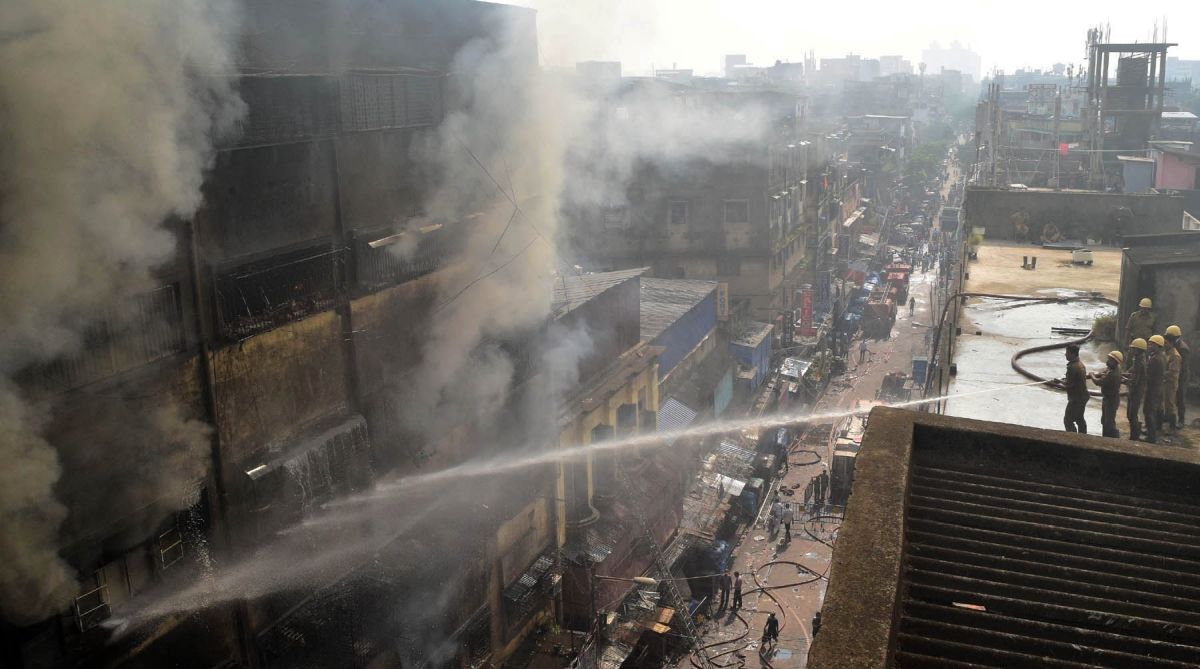The transition from Sutanati to shopping malls has been devastating. As Sunday unfolded, the dawn-to-dusk fire in Kolkata’s Bagree Market ended a crucial chapter in the evolution of the city’s economic history. The nerve-centre of wholesale trade has been reduced to ashes, and this is the core issue that ought to take precedence over consumer interest in the immediate perspective ~ the loss of the puja stock of garments and goodies.
This is the second fire in the congested Burrabazar area in the span of a decade, recalling the not dissimilar destruction of Nandaram market. Whether or not such catastrophes are contrived to facilitate more lucrative constructions need not detain us here; the probe report may well be docketed as such findings generally are.
Advertisement
Mercifully, no death or injury was reported till Tuesday afternoon; suffice it to register that goods worth a claimed Rs 200 crore have been destroyed. The tragedy prompted West Bengal’s Chief Minister to say ~ “There is no casualty. Nobody is trapped inside. A fire can always break out.” But she did bare her angst in distant Frankfurt ~ “Hooligans are active at Bagree; they have even rented out the market’s toilets.”
Factually, she may be right; nonetheless the admission underscores the dead hand of the administration that shows up in the face of catastrophes ~ from the fires at AMRI Dhakuria to Bagree via the bridge collapses on Vivekananda Road and Majerhat. The focus of the investigation ought to be on the almost routine renewal of the trade licence ~ as recently as July 31 ~ despite the fact that the shops had failed to adhere to fire safety rules, let alone obtain a no-objection certificate.
Markedly, the licences were renewed by a committee helmed by Mayor Sovan Chatterjee, who also happens to be West Bengal’s fire services minister. Palpable, therefore, has been the lapse of the thriving traders, one that has been compounded by the Kolkata Municipal Corporation and its characteristic wink at illegalities.
It now transpires that the market complex, which dates back to the 1950s, lacked a fire-fighting system though it served as a storehouse for inflammable material, perfumes, medicines, plastic and leather items. In a word, Bagree Market showcased a recipe for disaster in the absence of sprinklers and overhead tanks without water.
Additionally, the Fire Brigade was hamstrung by the topography, verily the choc-a-bloc constructions in the area. True, 30 fire tenders were mobilised, but not more than six could negotiate the narrow lanes at a time. The overhead cables prevented the use of hydraulic ladders.
In the net, the fire-fighting operation was intermittent when it ought to have been prompt and effective. The complex showcased failure on both counts and not the least because of the tangled skein of overhead wires ~ the thread that links the OBCs (Old Buildings of Calcutta), not to forget Stephen Court (March 2011). Bagree Market was wired for a disaster.









